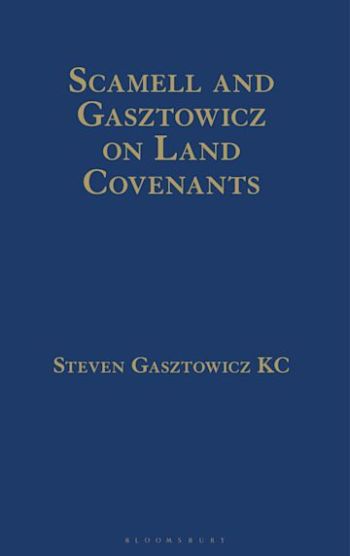
This book covers a complex and broad area of law for property lawyers to contend with. Dealing with the impact of covenants on land affects most conveyancing transactions and is also of vital importance to landowners, developers and others. The volume of case law on this topic is extensive.
This book includes coverage of positive covenants and planning covenants and is updated to include the major Supreme Court case on restrictive covenants, Alexander Devine Children's Cancer Trust v Housing Solutions Ltd [2020] 1 WLR 4783 and other major Court of Appeal decisions. It also deals with the special position of local authorities in relation to land covenants, and has coverage on freeing land from restrictions.
The book is divided into four main parts: